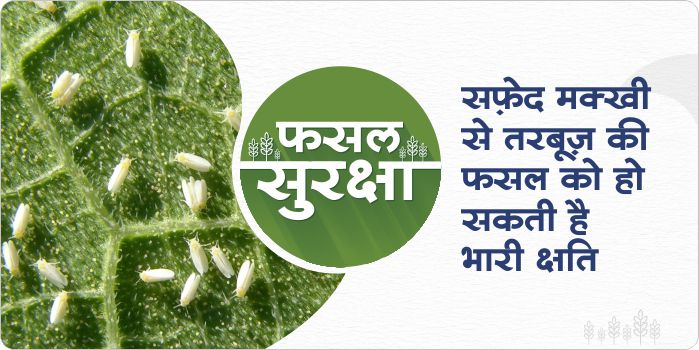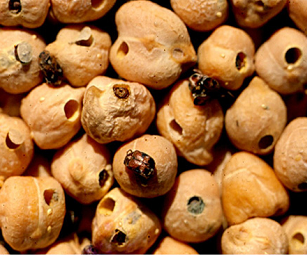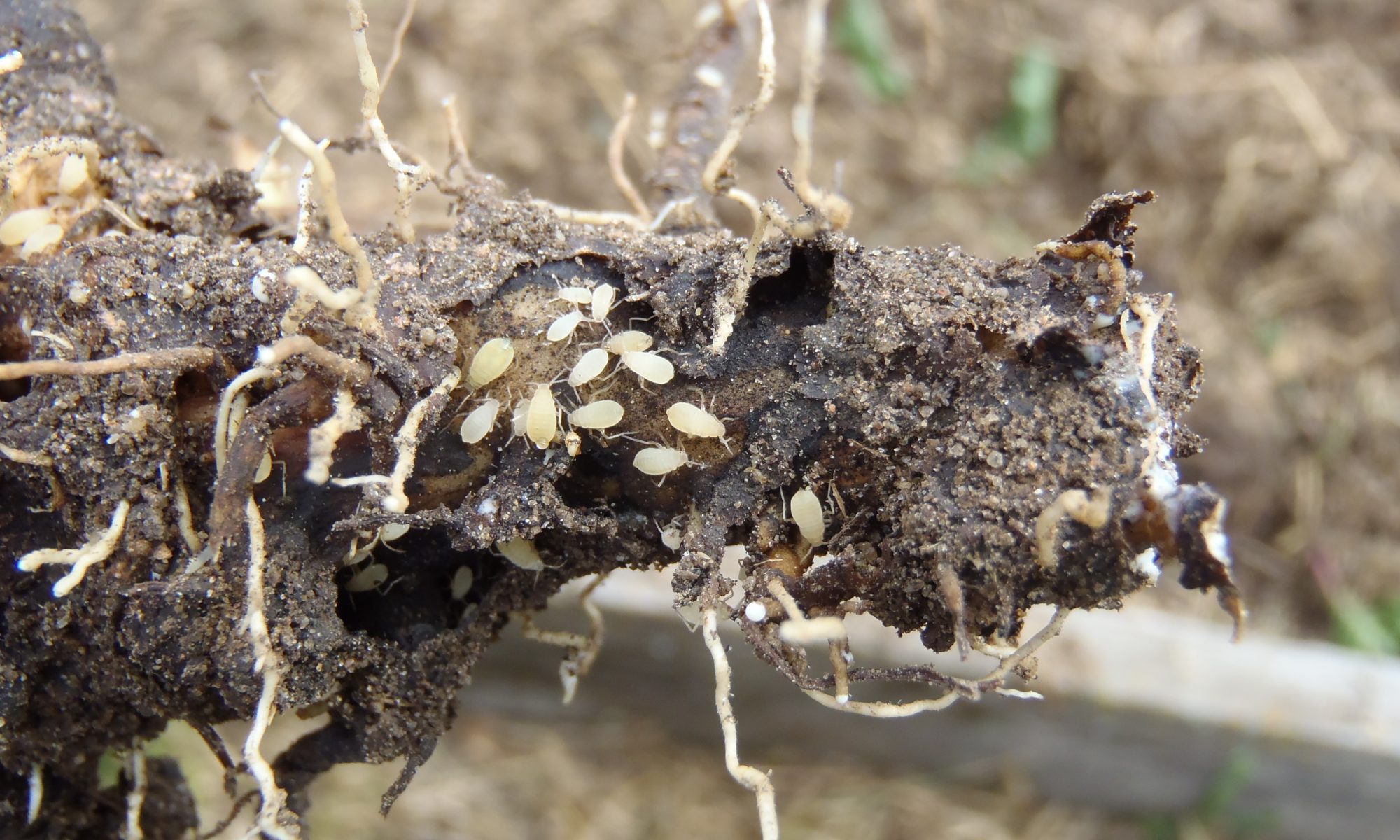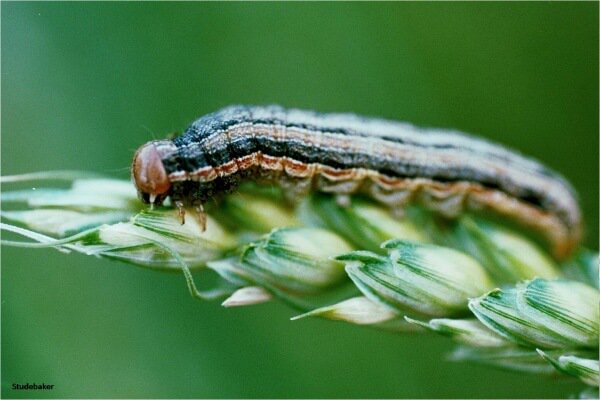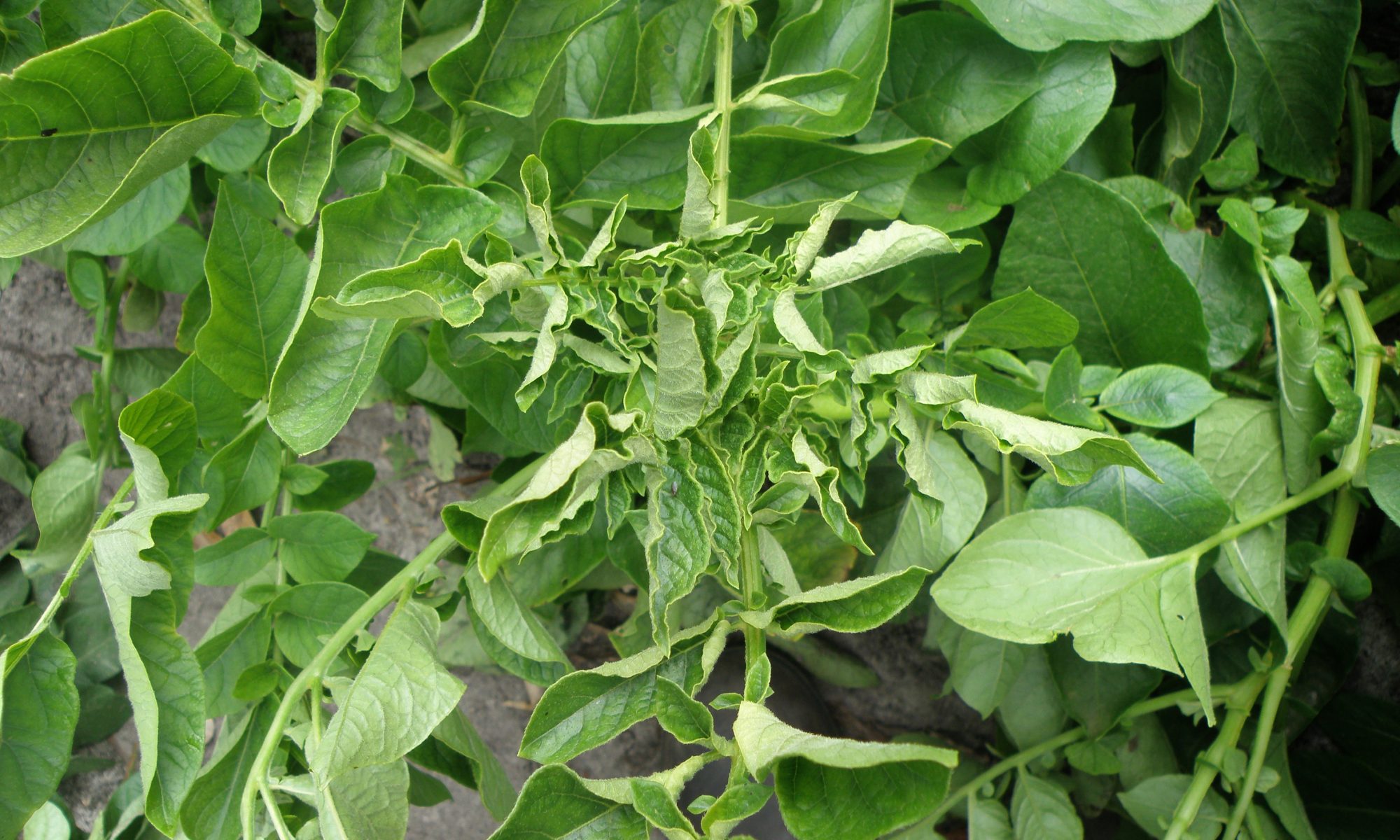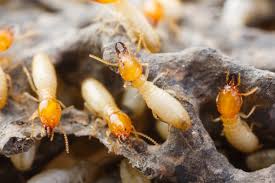- The nymph and adult thrips insect, suck the cell sap by scraping the leaves of watermelon plants, on the soft stalk, buds and flowers of the plant, it becomes curly because of thrips infestation. Due to its effect, the plants remain stunted.
- To control thrips, spray Lambda Cyhalothrin 4.9% CS @ 200 ml/acre or Profenophos 50% EC @ 500 ml/acre or Fipronil 5% SC @ 400 ml/acre at 15 days interval.
- Use the pesticide at an interval of 15 days.
How to control Aphid in Green gram
- Aphids are small, soft-bodied small insects that can be yellow, brown, green, or black.
- They usually suck the sap from the plant by forming groups on the corners of small leaves and twigs and secrete sticky substance (honeydew), which increases the chances of fungal diseases.
- Leaves and twigs may wither or become yellow due to severe infestation.
- Spraying of Thiamethoxam 25% WG @ 100 gram/acre or Imidacloprid 17.8 %SL @ 100 ml/acre or Flonicamid 50% WG @ 60 gram/ acre to protect against aphid.
- Use Beauveria Bassiana @ 250 gram/acre as biological treatment.
Control of white fly in watermelon
- Nymphs and adults suck the cell sap from the leaves.
- The affected leaves curl and dry.
- The affected plants show stunted growth.
- Whiteflies are also responsible for transmitting yellow vein mosaic virus or leaf curl disease.
- 4-5 foliar spray of dimethoate 30% EC @ 300 ml/acre or profenophos 50% EC @ 400 ml/acre at 10 days intervals.
Precautions while preparing solution for spraying of insecticide/fungicide
- Use good quality water to prepare spray fluid
- Prepare the spray drum in a clean drum or plastic buckets.
- insecticide and fungicide should not be mixed together.
- Also, do not spray in the afternoon and do not spray even when the wind is blowing. Do spraying in the morning only because in the afternoon there is a movement of bees, keeping these things in mind, you can not only protect yourself but also protect the environment.
- While using pesticides, it should be noted that there is no leakage in the equipment. Never try to slurp on a pesticide device. Liquid pesticides should be put in the device carefully and it should be taken care of not to enter any part of the body. If this happens, one must wash several times with clean water immediately.
- The remaining pesticide should be stored safely. Keep its chemicals out of the reach of children, old people, and animals. Empty containers of pesticides should not be used for any other purpose. They should be broken and pressed into the soil. No humans or animals should be allowed in the sprayed field after spraying the pesticide.
- Ensure spraying direction in the field and spray the same quantity
- Do not use more than the required amount of pesticides.
Pest attacks may occur in the change of weather
- Due to the change in the weather, many types of pests can attack crops because the moist environment condition is suitable for it.
- There is a possibility of attack of Red Beetle insect in Summer Cucurbits vegetables, if the large number of this insect then spraying of Cypermethrin 4% EC + Profenophos 40% EC 400 ml or Bifenthrin 10% EC 200 ml or Dichlorovos 76 EC 300 ml / acre.
- Spraying Thiamethoxam 25 WG 5 gm/ 15 liters of water in the okra to control the sucking insect such as white fly, aphid, jassid etc.
- There is a high possibility of Thrips in Onion crop so spraying Profenophos 50 EC @ 45 ml or Lambda cyhalothrin 4.9% CS @ 20 ml or Spinosed @ 10 ml or Fipronil 5 SC @ 15 liters water per acre.
- Use 0.5 ml mixture with insecticide in 15 liters of water, so that the insecticide is absorbed by the plants properly.
Pulse beetle management in gram
- The population of Pulse beetle has been observed rapidly after 60 days of stored granular storage period.
- Due to the initial loss due to transplantation of beetle in gram, 87.23% seed damage and 37.15% weight loss were observed within 120 days of storage.
- In various oils and plant products tested, Neem and castor oil @ 6 ml/kg seed proved effective for four months of storage.
- Coat the seed with small quantities of vegetable oil or mix neem leaves in the stored grain.
- Dip jute bag in 10% Malathion solution.
- use airtight storage structure.
- Fumigation with aluminum phosphide protects the seed without affecting the viability.
Like and share with other farmers by clicking on button below.
ShareControl of Root Aphid in Wheat
- This insect is active from November to February.
- Damage is more in rainfed and late sown crop.
- Yellowing of young plants is observed due to root aphids. In this case minute yellowish brown aphids may be present near the base or on the roots of the plant.
- Aphids also vector a viral disease named barley yellow dwarf virus (BYD). Yield of infected wheat plants can be reduced by 50%.
Control-
- Avoid late sowing.
- Avoid use excess nitrogen fertilizers.
- If the infestation in standing crop, Spray imidacloprid 17.8% SL @ 60-70 ml/acre.
- Or apply thiamethoxam 25% WG @ 100 gm/acre in soil with fertilizer/Sand/soil before irrigation.
Like and share with other farmers by clicking on button below
ShareHow to control Armyworm/ Cutworm in Wheat
-
- The primary symptom is defoliation of the plant.
- Larvae feed on the leaves, chewing from the edges to the midrib, or on the head of cereal plants.
- Heavy infestations can be very destructive; larvae may climb the plant. Some species may be found feeding at the soil surface, others, underground feeding on roots, and then there are some who feed inside the stem.
- The armyworm feeds during dawn and dusk period as it is actually shy of sunlight.
Management –- Look for larvae and signs of damage beginning in early spring. Caterpillars will often be found feeding on the undersides of leaves and on fresh growth. Handpick the worms you discover and don’t be tempted to crush them between your thumbs. Instead, drop them in a bucket of soapy water.
- Use 4-5 bird perches to attract birds.
- Spray Emamectin Benzoate 5% SG @ 100 Gm per acre.
- Spray fipronil 5% SC @ 400 ml per acre.
Like and share with other farmers by clicking on button below
ShareManagement of Leaf Roll Virus in Potato
Management of Leaf Roll Virus in Potato:-
- The disease is managed by using virus-free seed potatoes.
- Multiplying virus-free seed in aphid free areas.
- Population of aphid vectors is controlled by application of suitable contact/systemic insecticides.
- For effictive control of aphid, Spray Acetamiprid 20% SP @ 10 Gm/ 15 Litre water or Imidacloprid 17.8% SL @ 10 Ml/15 Litre water.
Like and share with other farmers by clicking on button below.
ShareManagement of Termites in Wheat
Management of Termites in Wheat:-
- Termites damage the crop soon after sowing and sometimes near maturity.
- They feed on roots, stems of growing plants, even dead tissues of plant feeding on cellulose.
- The damaged plants dry up completely and are easily pulled out.
- The plants damaged at later stages give rise to white ears.
- Infestation is heavy under unirrigated conditions and in the fields where un-decomposed farmyard manure is applied before sowing.
Management –
- Apply deep ploughing before sowing.
- Use well rotten FYM in field.
- Fill kerosine in mound of termite.
- The seed should be treated with Chlorpyriphos (20% EC) @ 5 ml/kg of seed before sowing.
- Broadcast Chlorpyriphos (20% EC)@ 1 litre/Acre with any fertilizer.
Like and share with other farmers by clicking on button below
Share


